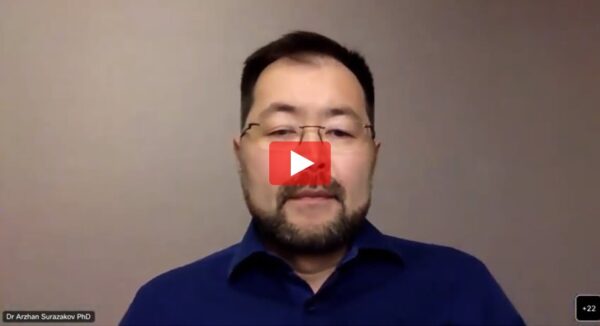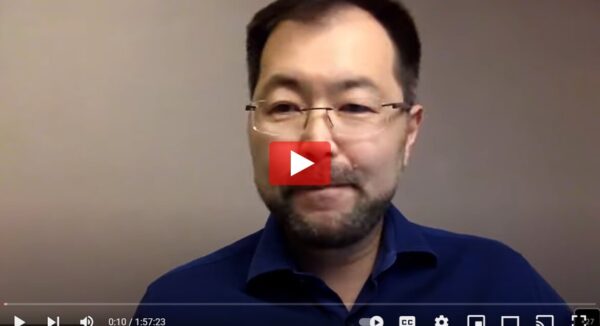Trigeminal neuralgia is a very painful condition that’s difficult to treat. This 2-part webinar shows how coMra therapy rebuilds the damaged nerve cells from within, to successfully treat severe neurogenic pain.
In a recent 2-part webinar, medical professionals demonstrated how coMra therapy has been used to successfully treat severe neurogenic pain caused by trigeminal neuralgia.
Download the coMra e-book for more information on coMra therapy
Trigeminal neuralgia is a very painful condition that’s difficult to treat. The common treatment approaches focus on blocking pain chemically and/or surgically. These approaches do offer relief from pain, but their effects wane with time. The core issue – i.e., damage to the nerve cells – remains untreated, and the pain comes back.
With coMra therapy, we aim to rebuild the damaged nerve cells from within. Various non-invasive low-intensity radiances have already been shown to provide significant benefits for peripheral neuropathies, including trigeminal neuralgia.
In coMra therapy, laser, magnetic field, ultrasound and colour are coherently combined to create a synergetic regenerative effect on depleted, damaged “misfiring” nerve cells.
In our coMra treatment centres, we have treated patients with a wide variety of neurological conditions, including trigeminal neuralgia. From our clinical experience, we learned:
- What to expect when treating recently diagnosed trigeminal neuralgia
- What to expect when treating chronic trigeminal neuralgia
- The best practices for treating trigeminal neuralgia using coMra therapy
- How to combine coMra protocols for trigeminal neuralgia together with other common conditions (such as fibromyalgia, arthritis, migraine, etc.) and in combination with other methods of treatment
coMra’s 2-part Trigeminal Neuralgia Webinar is now available to view online:
Part 1: November 1, 2022, 16:00 UTC
- Regeneration of trigeminal nerve – How and Why? by Dr Arzhan Surazakov PhD, Director of R&D, Radiant Life Technologies
- Clinical experience of treating trigeminal neuralgia with coMra therapy by Leslie Carmen, Founder and Clinical Director, Carmen Care Advanced Laser Therapy, Florida, USA
Part 2: November 15, 16:00 UTC
- coMra therapy for neuropathy (trigeminal neuralgia, Bell’s palsy) – our experience by Dr Anna Surazakova MD, CEO and Medical Director, coMra Centre for Restorative Medicine, Technologia Zhizni, Altai, Russia
- coMra protocols and holistic approach to trigeminal neuralgia by Garrett Murrin, Regional Manager: North America, Radiant Life Technologies
MORE ABOUT NEUROGENIC PAIN
‘Neuralgia’ and ‘neuropathy’ are both medical terms used to describe problems related to the nerves. You might also hear doctors talk about ‘neurogenic pain’ or ‘neuropathic pain’.
What exactly do we mean when we talk about neuralgia and neuropathy? These simple definitions show how the two are different but also where they overlap:
Neuropathy essentially means nerve damage. Degeneration, dysfunction or damage to the peripheral nerves can cause pain, tingling, numbness, swelling or muscle weakness in the affected parts of your body. Neuropathic symptoms often start in your hands or feet and get worse over time.
Neuralgia means acute nerve pain caused by nerve inflammation, degeneration or damage – i.e. pain caused by neuropathy. This pain can feel like burning, stabbing, or tingling, with different degrees of intensity across different areas of your body.
Both neuropathy and neuralgia are painful conditions that can be debilitating and seriously impact your quality of life.2,3
HOW LOW LEVEL LASER THERAPY CAN HELP
Low level laser therapy (LLLT) has been proven to significantly improve the function of damaged nerves and relieve the pain of neuropathy and neuralgia.4,5 coMra provides non-invasive, drug-free treatment for these conditions by doing the following:
- Providing overall systemic support
- Triggering biochemical changes in the cells, which stimulates your body’s own healing capabilities
- Regenerating nerve tissue and improving nerve function
- Reducing inflammation
- Improving blood circulation
- Promoting recovery from injury and physical trauma (including surgery)
- Reducing scar tissue on injury sites or surgical incision sites
- Treating or managing underlying conditions (for example, in the case of neuropathy caused by diabetes)
Read more about using coMra to manage neurogenic and neuropathic problems:
- How to Relieve Neuralgia and Neuropathy Pain with coMra
- coMra Universal Treatments for the Nervous System
- Treating Diabetes and Neuropathy with coMra Therapy
coMra PROTOCOLS FOR NEUROGENIC AND NEUROPATHIC PAIN

Protocols for systemic support:
UNIVERSAL 7 (NERVIOUS SYSTEM) is a 2-part protocol that helps with recovery from neurological disorders, and also treats nervous disorders and emotional exhaustion. It combines the benefits of two powerful Universal coMra treatments:
- Part 1 follows the UNIVERSAL 5 (SOMATIC BIOSTIMULATION) protocol, targeting key points on the sternum and head, as well as the adrenal glands.
- Part 2 follows the UNIVERSAL 3 (BLOOD) protocol, targeting major arteries at key points around the body.
UNIVERSAL 7 can be used alone or as a complementary protocol to other coMra treatments for neuralgia and neuropathy. UNIVERSAL 3 and UNIVERSAL 5 can also be used separately.
Protocols for treating specific types of neuropathy:
- NEUROLOGY 2: Radiculopathy and sciatica
- NEUROLOGY 3: Neuropathy of the facial nerve
- NEUROLOGY 4: Trigeminal nerve neuropathy
- NEUROLOGY 15: Diabetic polyneuropathy
Protocols for treating specific types of neuralgia:
- NEUROLOGY 4: Trigeminal nerve neuralgia
- NEUROLOGY 16: Post-herpetic neuralgia (caused by shingles)
- NEUROLOGY 17: Post-traumatic neuralgia and complex regional pain syndrome
Protocols for underlying conditions:
- IMMUNOLOGY 1: Autoimmune conditions, Lyme disease and lupus
- ENDOCRINOLOGY 1: Diabetes mellitus
- SURGERY 2: Surgical cuts, traumatic wounds and scars
- NEUROLOGY 16: Treats shingles as well as post-herpetic neuralgia
- TRAUMATOLOGY: The Traumatology protocols treat various muscle and joint injuries
See the User Guide for full instructions on all coMra protocols.
NOTE: coMra is a powerful modality. The uses described above are those recommended by the coMra User Guide. Experience over 10 years has shown that in the case of most chronic conditions, treatments can also be spread out to once or twice per week, without taking the breaks outlined in the guide.
References:
1 Neuralgia/ Neuropathy. Advanced Pain Care. Austin Pain Doctor. Accessed November 25, 2022.2 McCarberg BH, Billington R. Consequences of neuropathic pain: quality-of-life issues and associated costs. Am J Manag Care. 2006;12(9 Suppl):S263-8.3 Girach A, Julian TH, Varrassi G, et al. Quality of life in painful peripheral neuropathies: a systematic review. Pain Res Manag. 23;2019:2091960. doi: 10.1155/2019/20919604 de Andrade AL, Bossini PS, Parizotto NA. Use of low level laser therapy to control neuropathic pain: A systematic review. J Photochem Photobiol B. 2016;164:36-42. doi: 10.1016/j.jphotobiol.2016.08.025.5 Cg SK, Maiya AG, Hande HM, et al. Efficacy of low level laser therapy on painful diabetic peripheral neuropathy. Laser Ther. 2015;24(3):195-200. doi: 10.5978/islsm.15-OR-12.6 coMra User Guide.






